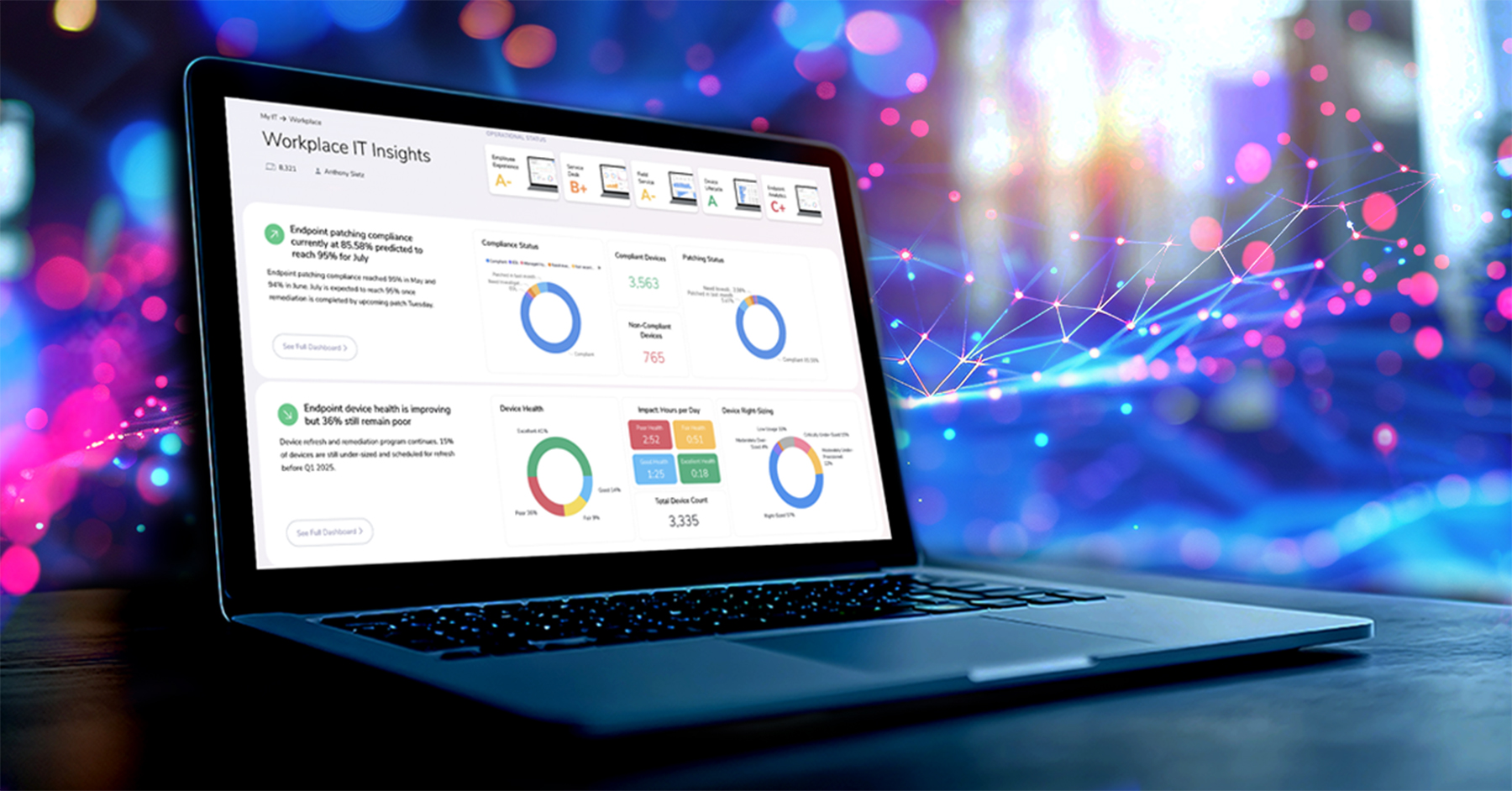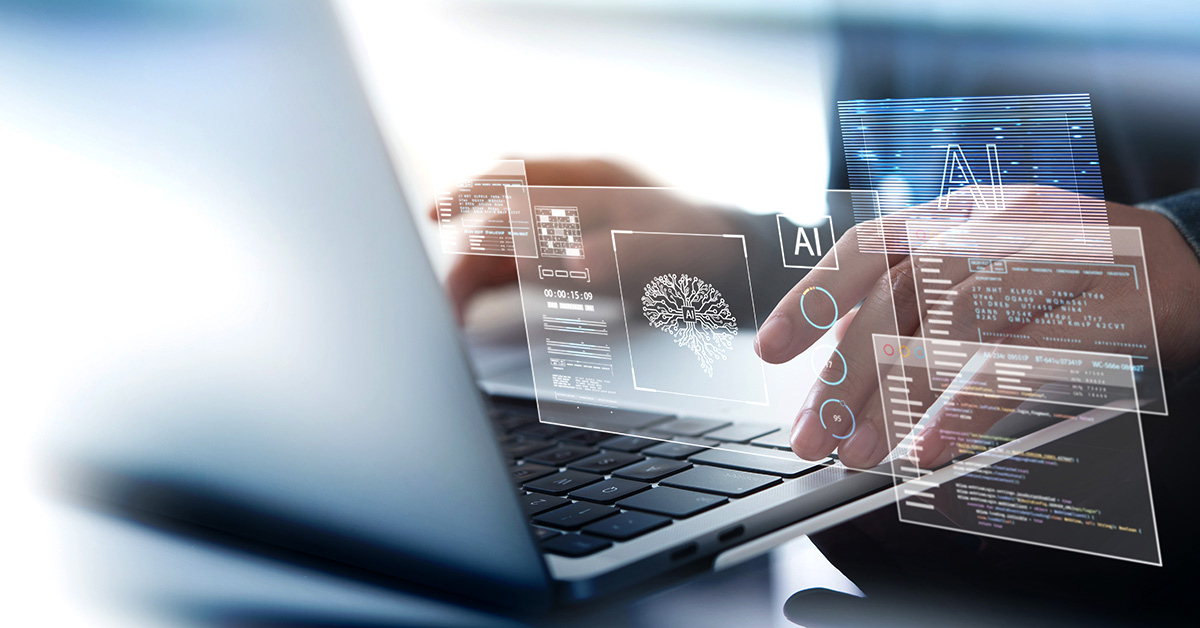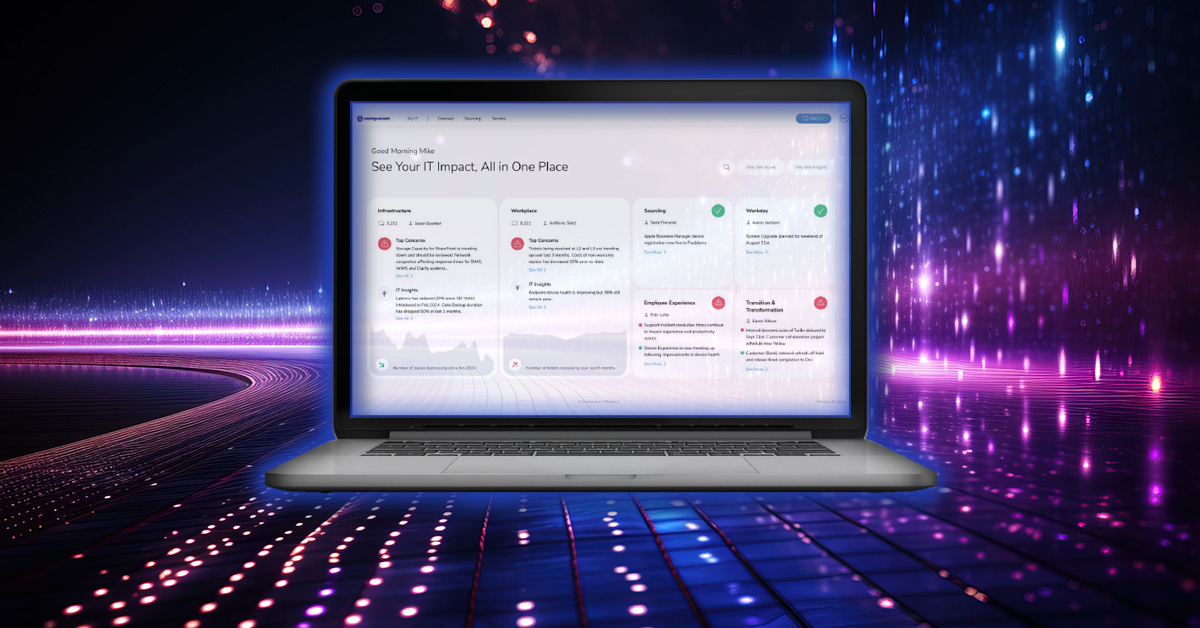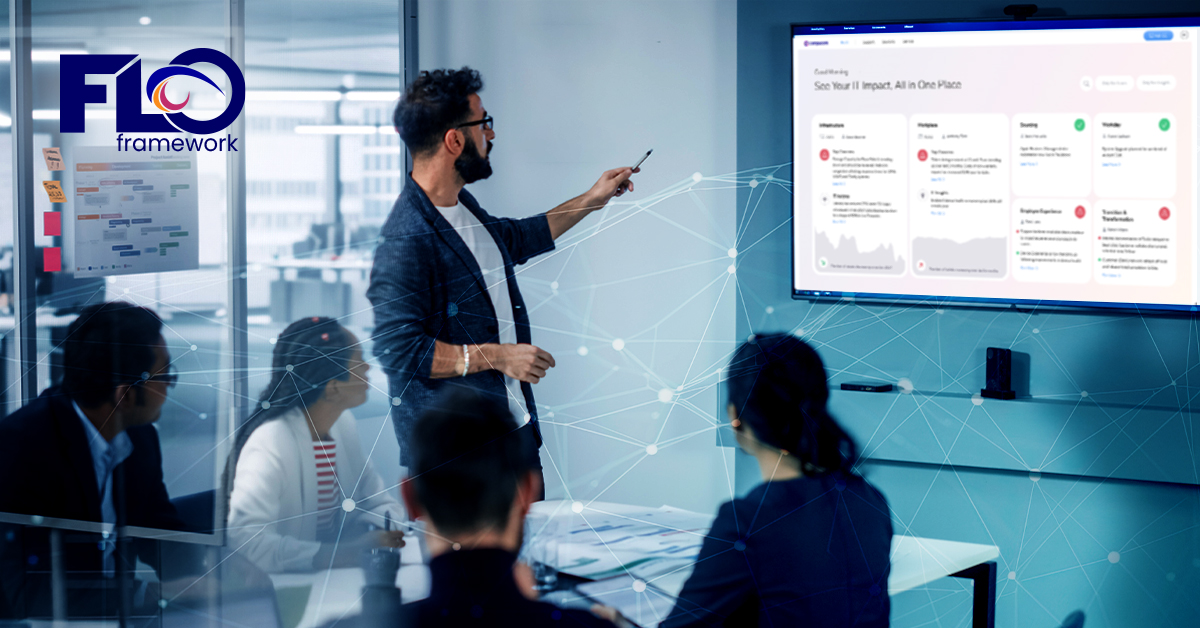- Device Lifecycle Services
- Experience Management

The Best Device Experiences for the Hybrid Workforce
No Turning Back!
Hybrid and remote work models are not going away. While there’s been a push to return to the office this year, and the average city office occupancy rates are over 50% for the first time since the pandemic, the Wall Street Journal reports those numbers have now stalled.
The percentage of companies requiring full-time office work dropped in the past few months from 49% to 42%. Employee preference is clear: 98% of respondents in a recent poll would like to work remotely, at least some of the time, for the rest of their careers.
While employees happily welcomed the benefits and relief of the new remote and hybrid models, companies have had to contend with the technology management concerns of the new highly distributed workforce. During the pandemic, many businesses scrambled to adapt what they had and add cloud-based technology and tools to manage endpoints and aid productivity.
But now, as the dust settles, how can companies more effectively manage and secure local, remote, and hybrid devices while reducing the cost and complexity of device management?
The Challenges
Managing devices in a hybrid world means more than just keeping them current and secure. Here are the major areas a good solution must address:
- Device diversity
- Security risks
- User privacy concerns
- Application management
- Compliance and regulatory requirements
- Change management
- Scalability
- Performance
While addressing these concerns, organizations should ensure their device management strategies and solutions stay current with the latest workplace technology and the evolving threat landscape.
But if these were not enough on their own, there is a bigger challenge — employees are demanding better digital experiences. How do we address all of these and …oh yeah…reduce costs too.
The Unified Endpoint Management Experience
Unified Endpoint Management (UEM) can play an important role in enhancing the device experience because it inherently supports the remote paradigm, enables device diversity, integrates with security compliance solutions, and more closely integrates into broader aspects of the device lifecycle, such as device procurement, build, and support. With a 100% cloud footprint, endpoint management solutions will also lower costs by eliminating on-premises management infrastructures and simplifying management processes.
So, perhaps the time has come to bite the bullet and go with the Unified Endpoint Management solutions that have been slowly making ground across the enterprise.
Our Product Management Director, Trevor Kemp, says, “Most large enterprises’ endpoint management solutions remain in co-managed mode, with UEM and on-premises solutions sharing the workload. However, with the need to improve device experiences, improve device choice, and lower costs, we see increasing pressure to adopt cloud-based unified endpoint solutions that are less complex and are integrated into a more flexible cradle-to-grave device lifecycle”.
How can UEM contribute to the device experience?
- Device choice – Windows, Macs, and mobile devices
- Streamlined device onboarding – Automating device provisioning and configuration simplifies the onboarding process, ensuring that users can quickly start using their devices without any hassles.
- Compliance and security – UEM can provide efficient security features such as device encryption, data loss prevention, and remote wipe capabilities. By enforcing compliance policies and securing endpoints, you can ensure a secure digital experience for all end users.
- Self-service capabilities – Self-service portals and app catalogs allow users to update or install applications on their own. This helps users customize their experience and not have to rely on IT for routine tasks.
- Application management – Administrators can ensure that all users have access to the appropriate applications and updates, reducing disruptions within the digital experience caused by outdated or missing software.
- Personalization and user preferences – Personalization settings and user preferences across different devices ensure a tailored and consistent digital experience for users regardless of the type of endpoint.
- Performance analytics – Performance monitoring capabilities allow IT administrators to track performance metrics and identify potential holes. By proactively addressing performance issues, organizations can ensure a seamless and satisfactory digital experience for users.
Shifting away from traditional on-premises endpoint management solutions is hard. Adopting a co-management approach and shifting workloads to the cloud over time is the order of the day but has added management complexity and cost.
It’s now time to invest in the next step…
Partnering with a company that can manage the entire lifecycle of every IT device in your organization, from procurement to retirement, is a win because it allows you the space and time to focus on your employees’ digital experience and, ultimately, grow your business.
RecenT

9 Ways Strategic IT Staffing Empowers Organizations

Case Studies: Asset Intelligence and Endpoint Compliance Made Easy

AI and the Enterprise: The Future of IT Management

Exploring the Opportunities and Obstacles of AI in the Enterprise

One Dashboard to Rule Them All: Strategic IT Excellence with Full Lifecycle Observability

Transforming IT Operations with Full Lifecycle Observability: How Compucom’s FLO Framework Redefines Data-Driven Efficiency
TOPICS
Unified Endpoint Management and Why it Matters for the Enterprise
- Device Lifecycle Services
- Experience Management
The Best Device Experiences for the Hybrid Workforce
No Turning Back!
Hybrid and remote work models are not going away. While there’s been a push to return to the office this year, and the average city office occupancy rates are over 50% for the first time since the pandemic, the Wall Street Journal reports those numbers have now stalled.
The percentage of companies requiring full-time office work dropped in the past few months from 49% to 42%. Employee preference is clear: 98% of respondents in a recent poll would like to work remotely, at least some of the time, for the rest of their careers.
While employees happily welcomed the benefits and relief of the new remote and hybrid models, companies have had to contend with the technology management concerns of the new highly distributed workforce. During the pandemic, many businesses scrambled to adapt what they had and add cloud-based technology and tools to manage endpoints and aid productivity.
But now, as the dust settles, how can companies more effectively manage and secure local, remote, and hybrid devices while reducing the cost and complexity of device management?
The Challenges
Managing devices in a hybrid world means more than just keeping them current and secure. Here are the major areas a good solution must address:
- Device diversity
- Security risks
- User privacy concerns
- Application management
- Compliance and regulatory requirements
- Change management
- Scalability
- Performance
While addressing these concerns, organizations should ensure their device management strategies and solutions stay current with the latest workplace technology and the evolving threat landscape.
But if these were not enough on their own, there is a bigger challenge — employees are demanding better digital experiences. How do we address all of these and …oh yeah…reduce costs too.
The Unified Endpoint Management Experience
Unified Endpoint Management (UEM) can play an important role in enhancing the device experience because it inherently supports the remote paradigm, enables device diversity, integrates with security compliance solutions, and more closely integrates into broader aspects of the device lifecycle, such as device procurement, build, and support. With a 100% cloud footprint, endpoint management solutions will also lower costs by eliminating on-premises management infrastructures and simplifying management processes.
So, perhaps the time has come to bite the bullet and go with the Unified Endpoint Management solutions that have been slowly making ground across the enterprise.
Our Product Management Director, Trevor Kemp, says, “Most large enterprises’ endpoint management solutions remain in co-managed mode, with UEM and on-premises solutions sharing the workload. However, with the need to improve device experiences, improve device choice, and lower costs, we see increasing pressure to adopt cloud-based unified endpoint solutions that are less complex and are integrated into a more flexible cradle-to-grave device lifecycle”.
How can UEM contribute to the device experience?
- Device choice – Windows, Macs, and mobile devices
- Streamlined device onboarding – Automating device provisioning and configuration simplifies the onboarding process, ensuring that users can quickly start using their devices without any hassles.
- Compliance and security – UEM can provide efficient security features such as device encryption, data loss prevention, and remote wipe capabilities. By enforcing compliance policies and securing endpoints, you can ensure a secure digital experience for all end users.
- Self-service capabilities – Self-service portals and app catalogs allow users to update or install applications on their own. This helps users customize their experience and not have to rely on IT for routine tasks.
- Application management – Administrators can ensure that all users have access to the appropriate applications and updates, reducing disruptions within the digital experience caused by outdated or missing software.
- Personalization and user preferences – Personalization settings and user preferences across different devices ensure a tailored and consistent digital experience for users regardless of the type of endpoint.
- Performance analytics – Performance monitoring capabilities allow IT administrators to track performance metrics and identify potential holes. By proactively addressing performance issues, organizations can ensure a seamless and satisfactory digital experience for users.
Shifting away from traditional on-premises endpoint management solutions is hard. Adopting a co-management approach and shifting workloads to the cloud over time is the order of the day but has added management complexity and cost.
It’s now time to invest in the next step…
Partnering with a company that can manage the entire lifecycle of every IT device in your organization, from procurement to retirement, is a win because it allows you the space and time to focus on your employees’ digital experience and, ultimately, grow your business.
Recent Blogs

9 Ways Strategic IT Staffing Empowers Organizations

Case Studies: Asset Intelligence and Endpoint Compliance Made Easy

AI and the Enterprise: The Future of IT Management

Exploring the Opportunities and Obstacles of AI in the Enterprise

One Dashboard to Rule Them All: Strategic IT Excellence with Full Lifecycle Observability




